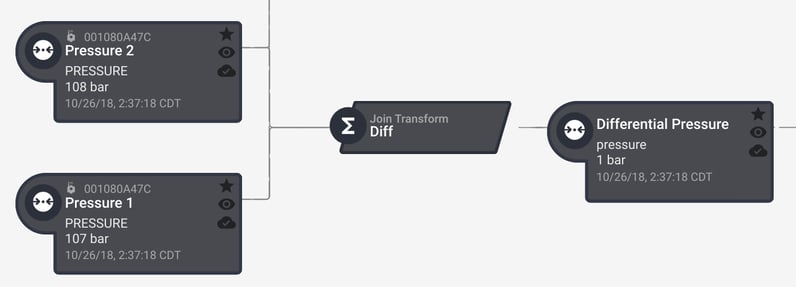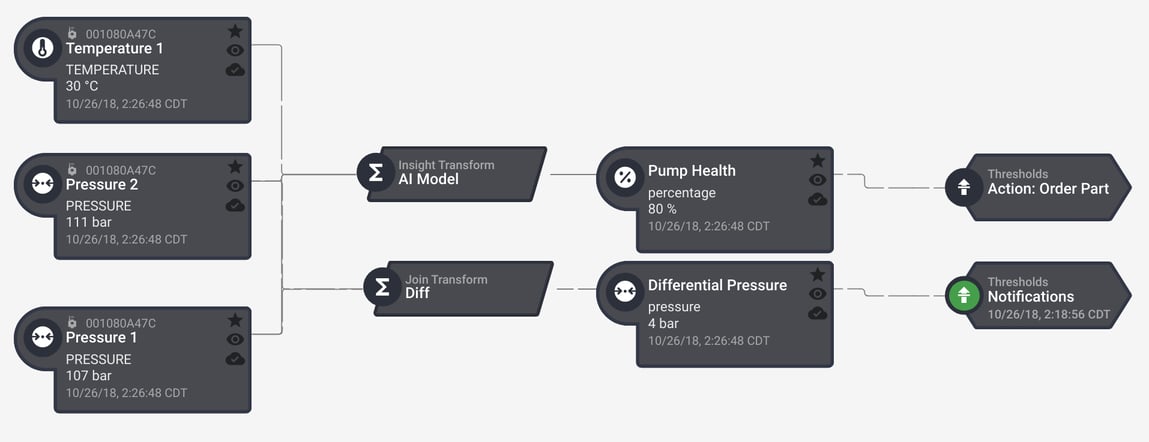How ExoSense™ Insights Enable Industrial Artificial Intelligence
by Jay Carlson, on October 29, 2018
An increasingly connected world and the Big Data generated by it have made household names out of terms and acronyms describing data analysis. Chief among them is artificial intelligence (AI), which generally refers to the ability for a computer to reason. In the context of industrial systems, this typically means predictive maintenance and proactive response to machine behavior. The interconnectedness of data—much of it generated from the Internet of Things (IoT)—and AI cannot be overstated. I can’t remember the last time I heard about IoT without also hearing about AI. This is particularly true with Industrial IoT (IIoT), where systems often stream more information to the cloud than most—some send entire protocol registers directly to the cloud in real-time. As product companies in the IIoT space attempt to move from merely connected machines to truly smart machines, they face both technical and business hurdles. In the blog below, we’ll discuss a few of these hurdles. Namely, if product manufacturers can do AI, how do they implement that intelligence and what is the end user experience?
On the journey to enabling users with real-time, easily-digestible fleet health information, IIoT product manufacturers should select a modular toolset that will enable them to start simple and grow as their analytics capabilities and needs mature. Out of the gate, that toolset should quickly and transparently enable simple alerts and thresholds that can be immediately implemented in the early stages of analytics maturity. Adding trend analysis and streaming analytics functionality should be next. Finally, growing into a fully matured, analytics-enabled manufacturing organization—one in which AI monitors fleet performance and predictive maintenance is a standard feature set—should be well within reach. A toolset that will enable the entire spectrum of analytics capabilities will be integral to manufacturers’ operational technology stacks; as such, that toolset needs to be flexible, intuitive, and very smart.
To that end, Exosite developed ExoSense™, a ready-to-deploy condition monitoring solution that provides operational insight into high-value assets, systems, and equipment. It’s transformed the way industrial manufacturers bring connected products to market by pulling together the necessary software, tools, and end application needed to get going quickly, while also recognizing that they know when and why their equipment is going to fail—they have the brightest minds designing their hardware and performing failure-mode analysis. Based on this notion, ExoSense provides Insights: self-service, codeless algorithm builders for manufacturers to operationalize their institutional expertise. A wide variety of built-in components and an extensible plugin system are available to integrate that knowledge and enable users to monitor machine and fleet health at any stage of analytics maturity.
For ExoSense customers, Insights take three forms: Transformations, Rules, and Actions. Transformations can incorporate as many or as few data sources as is desired, returning new processed and derived data streams to be utilized in tandem with raw signal data. Rules operate on data streams to generate events when certain criteria is met. Finally, Actions enable closed-circuit responses to events, including notifications and remote device control.
Take, for example, a hydraulic pump. At a regular interval, two fluid pressure measurements are sent to ExoSense. To deal with drift or machine degradation over time, it is more pertinent to watch the differential pressure than any one pressure value. With Transformations, it’s simple to create a new differential pressure data stream that propagates throughout the rest of ExoSense, as seen below.

At the most basic level, you reason that one pressure should not drop below 90% of the other. You can set a threshold so that when the differential pressure is higher than 10% of the incoming pressure, the Rules functionality will trigger an alert.

Meanwhile, your data science team could train an AI model on thousands of machines from across your fleet and find that some machines displayed longer lifespans after being adjusted for degradation. The output of the model is a dynamic response to machine degradation via remote machine control. After being implemented as an Action within ExoSense, each machine is adjusted in real-time, according to models derived from the analysis of fleet behavior. Once integrated with ExoSense, another Action can be triggered to order and ship a new filter to the location and schedule a technician to install it.

The configuration and interoperability of these Insights (Transformations, Rules, and Actions) enable companies to implement the full glory of AI: autonomous, decision-making systems. But no one starts there. AI isn’t so much a single monolith as it is the collection of small bricks that form it. Decades of statistical analysis and myriad analytical components make up an effective AI model—it takes time and experience to model, train, and implement. However, it is possible to get started in a simple way that will pave the path for a more mature AI strategy. Don't overlook the highly-effective value of starting small by programmatically replicating your intuitive asset knowledge with simple thresholds and comparisons. In ExoSense, these take seconds to set up for a single machine. In a few more seconds, that same behavior can be deployed across a fleet of machines, creating a baseline health gut-check that is instantly applied to all your valuable assets. When you or your end users are ready, ExoSense can be easily configured for more advanced AI models. We’ve also made it easy to host Insights anywhere manufacturers see fit—in Exosite’s Murano platform, Amazon Web Services, Microsoft Azure, Google Cloud Products, and others. This flexibility means that product manufacturers can easily incorporate the ExoSense experience with existing systems, and the drag-and-drop simplicity of configuration means that end users never need to worry about what goes on under the hood.
The road to analytics maturity can be long, and industrial product companies need a platform with which to test hypotheses and implement them in a scalable, end-to-end system. Rather than spending their energy and resources building data pipelines to support eventual analysis, ExoSense lets product manufacturers focus on what differentiates them: the domain expertise that only comes with years of experience developing new technologies as industry leaders. In turn, product manufacturers can enable their customers to make effective, efficient, and timely decisions on the health of their products based on this domain expertise, while both retaining and monetizing their IP. From fog computing with ExoEdge to advanced analytics and feedback-loop capabilities with Insights, ExoSense supports the full gradient of AI with the simplicity that end users need. Implement as much or as little as is needed for IIoT use cases, all vertically configurable and horizontally deployable across a fleet of machines. If you’re interested in learning more, reach out to set up a demo and chat about how your existing and future systems can integrate with ExoSense.



